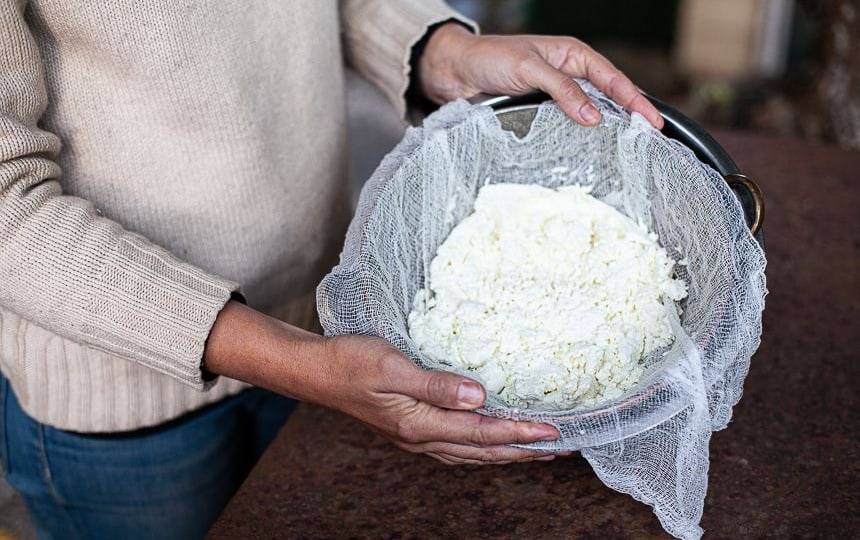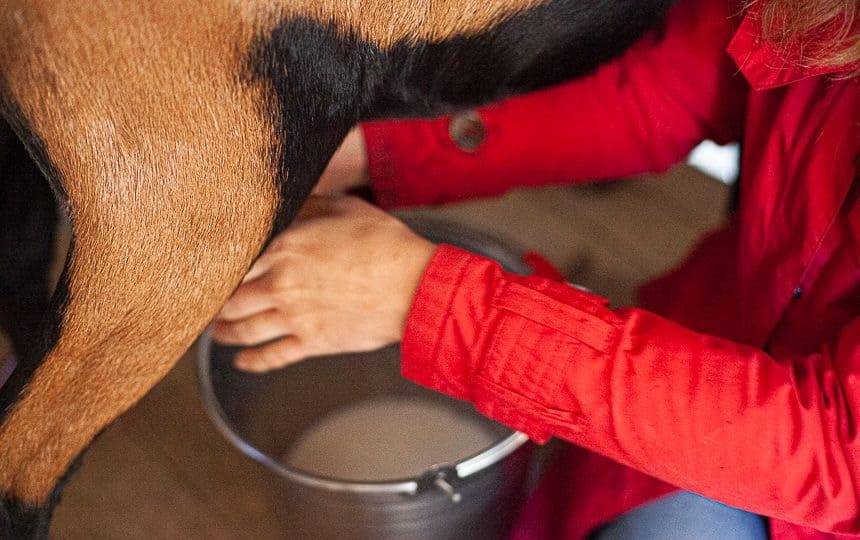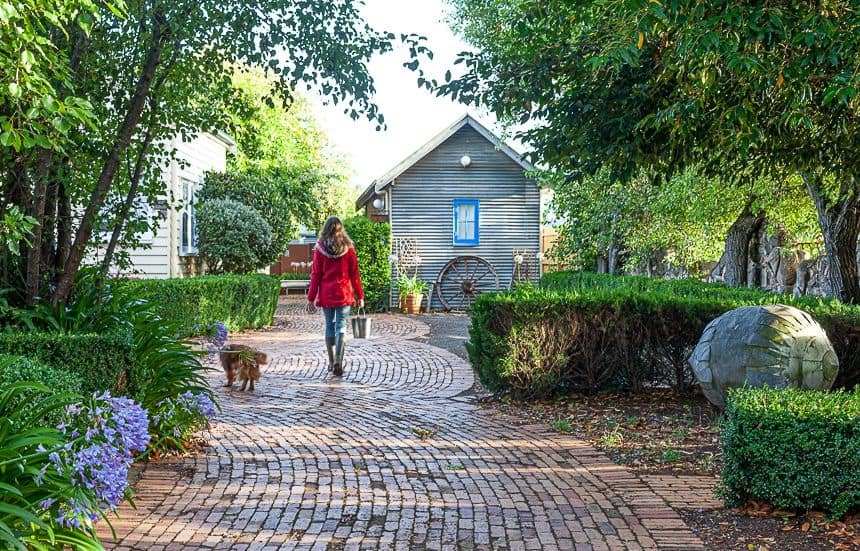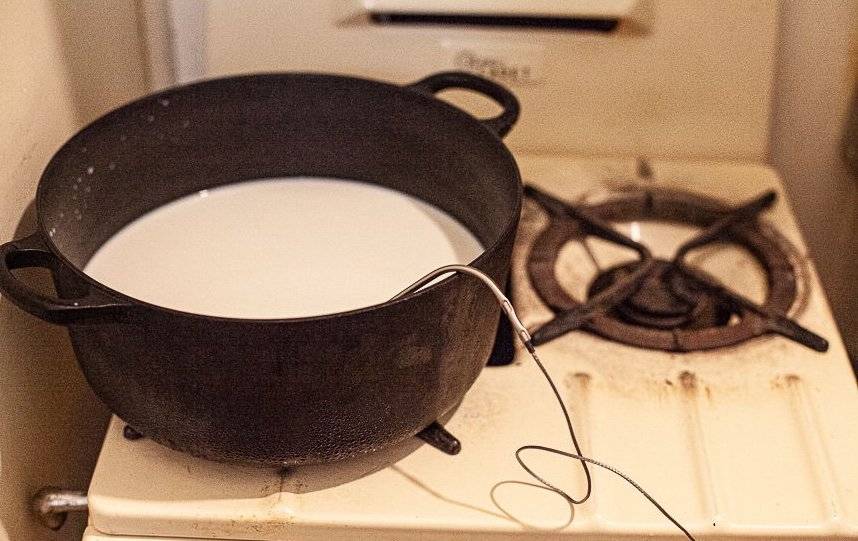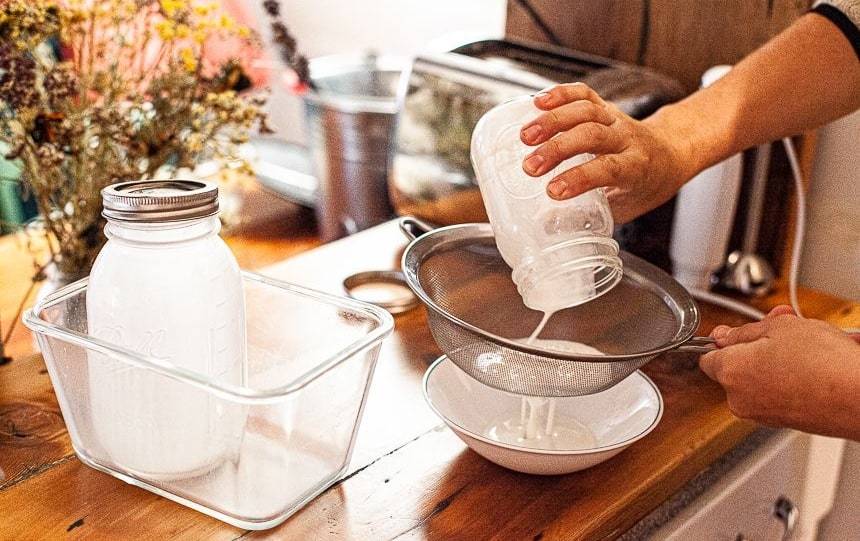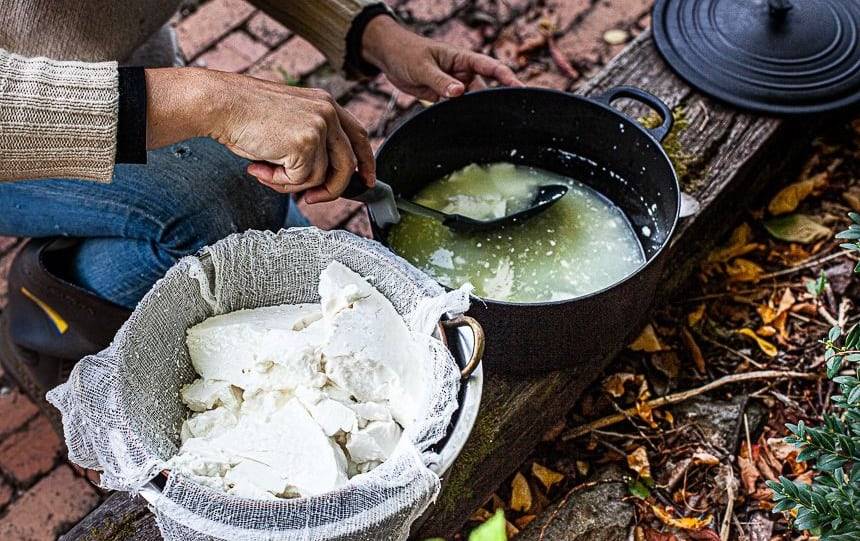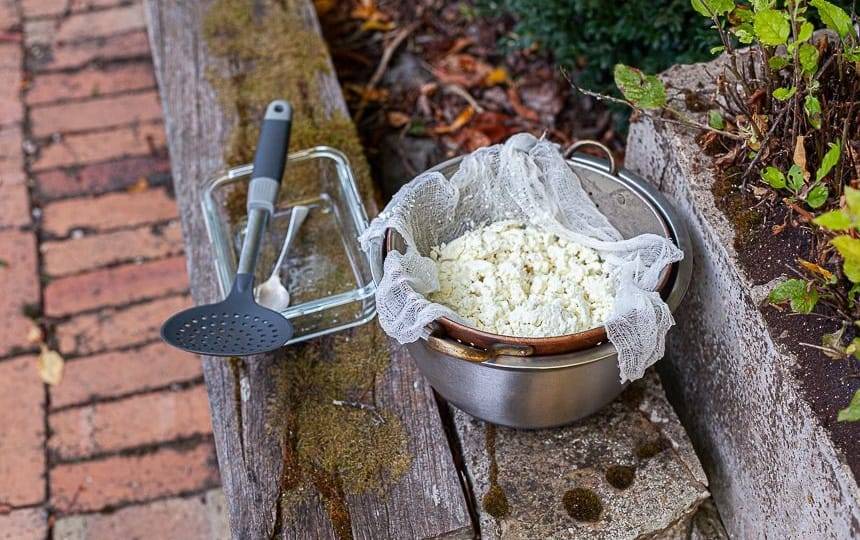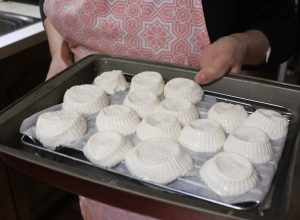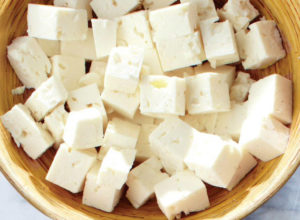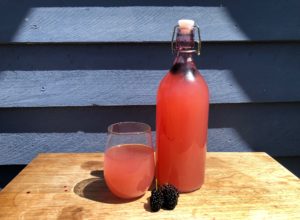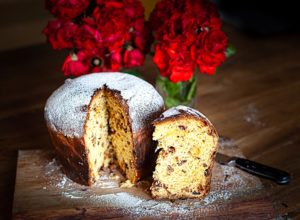We show you how to make goat cheese at home using only fresh and simple ingredients.
Fresh, warm, salty and creamy goat cheese is easy to make. If you can access raw milk, well, that is a beautiful thing – straight from the udder into a stainless steel pot. Why not keep your own goat or share with others by creating a milking coop?!
For this recipe you will need access to either raw or pasteurised goat’s milk, milk kefir or whey, and rennet liquid. All other equipment can be usually found in everyday kitchens.
How to make goat cheese
Ingredients/equipment:
- 4L of raw or pasteurised fresh goat’s milk
- ¼ C of active milk kefir
- 0.8ml liquid rennet (rennet tablets are not readily available in Australia)
- The rule with liquid rennet is to use 0.2ml of rennet for every 1L of milk. Then dilute the rennet with 10 times its volume of water. So for this recipe dilute 0.8ml rennet (because we are working with 4L of milk) in a glass with 8ml of water. You will need a medicine dispensing cup to make this easy.
- 1tbs of salt
- Colander
- Bowl x 2
- Sieve
- Muslin cheese cloth
- Wooden spoon
- Slotted spoon
- Thermometer
- Pot with lid
First steps
If using raw goat’s milk to make your goat cheese, strain milk after collecting to eliminate hairs from the milking process.
Take kefir out of the fridge to reach room temperature as we don’t want to add cold kefir to heated milk.
Place the strained milk in a stainless steel (best choice as it’s non-reactive), cast iron or aluminium pot and heat to 32C.
Use a gentle heat to prevent scorching and to ensure milk at the base of the pot does not stick. This is important because overheating and scorching damages the natural sweetness of milk and therefore the flavour of the cheese made.
Heating milk
Use a thermometer to discern temperature. There exist these wonderful digital thermometers with extensible rods that beep when the correct temperature is reached. The rod sits in the milk and is connected via a long wire to a small digital thermostat. Make sure the wire is not in contact with your stoves heat source. Or use an analogue thermometer and check regularly.
After awhile and with lots of experience you may consider doing away with a thermometer all together.
Do not stir as this slows down heating. Just ensure a slow gentle heat to prevent the milk from sticking to the pot base.
Milk kefir and rennet
As the milk is heating strain the milk kefir through a sieve and collect liquid kefir in a bowl. Then place kefir crystals back in the milk kefir jar and add fresh goat’s milk to it. Or add crystals to a clean the jar if the milk kefir being used is a little over-fermented and needs a less acidic jar environment.
Now prepare your rennet (make sure you are checking the temperature of your milk). Pour 0.8ml into a medicine dispensing cup. Then measure 8ml of water that has been boiled and allowed to cool.
This is important, especially if you are beginner. The aim here is to prevent unknown and unwanted bacteria from competing with the bacteria in your kefir. Mix the rennet in the cool water.
In this recipe the kefir is the “culture” part that helps add flavour to milk. Cultures add flavour by acidifying cheese. This happens when lactose is converted into lactic acid. Lactose is a naturally occurring sugar in milk (think glucose, sucrose, fructose, all ending in ose).
Lactic acid prevents the milk from going bad as once acidification has been reached unwanted bacteria is kept in check (for the duration of the cheese making process).
Rennet is used to coagulate milk to create a thick curd by separating the milks whey.
Greenliving Australia, Cheeselinks and Mad Millie all sell rennet.
Final steps
Once your milk has reached 32C add the milk kefir and rennet, then mix gently with a slotted metal spoon.
Cover pot with lid and wrap blankets around it to keep it warm for 24 hours.
The next day you should find the curds and whey have separated. With the heavy white curds at the bottom of the pot and translucent whey around it and at the top.
Use a slotted spoon to lift out the whey into a colander lined with muslin cloth and sitting on top of a bowl.
Drain and cover with pot lid. Make sure curds are suspended above the whey. Once well drained add 1 tsp of salt and mix gently in and thoroughly. Pour whey into a clean glass bottle and place in the fridge. This is a protein rich drink so do not let it go to waste!
Now that the salt has been added and mixed you will need to drain the cheese once more as the salt will draw out any remaining water in the cheese. Collect the remaining whey.
Once the cheese feels quite dry it is ready to eat. Place in a clean jar with virgin olive oil for some extra flavour and keep in the fridge where it should keep for a couple of weeks.
Images: Village Dreaming

